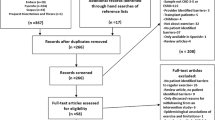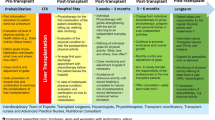Abstract
Background
Impaired physical capacity increases peri-liver transplant complications. Patient perceptions regarding exercise prior to transplantation are not known.
Aims
This study aimed to assess patient and caregiver activity levels, perceptions of willingness to exercise, and of provider advice.
Methods
Consecutive patients listed for liver transplant and caregivers presenting for routine outpatient visits were evaluated over a 3-month interval. Anonymous surveys adapted to patients and caregivers addressed the importance and safety of exercise, type and duration of exercise performed, barriers, willingness to wear a monitoring device, and perceived provider recommendations. Responses were logged on a Likert scale from 1 to 5.
Results
Three hundred and sixty-eight responses were received. Most participants perceived exercise as important. Patients exercised three times per week for 30 min. Eighty percent endorsed walking (median response: 2—agree; IQR 1–2). Most did not jog, swim, cycle, or strength train. Fatigue, reported by 70%, was the major barrier (2, IQR 1–3). Over 90% of caregivers endorsed exercise as important (1—strongly agree, IQR 1–2) and encouraged exercise (median response 2, IQR 1–2). Over 60% of patients (median response 2, IQR 1–3) and caregivers (median response 2, IQR 2–3) felt providers encouraged exercise.
Conclusions
Patients and caregivers are willing to exercise to optimize physical fitness prior to liver transplantation.


Similar content being viewed by others
Abbreviations
- FLEXIT:
-
Fitness, life enhancement, and exercise in transplantation
- LT:
-
Liver transplant
- MELD:
-
Model for end-stage liver disease
References
Kim HY, Jang JW. Sarcopenia in the prognosis of cirrhosis: going beyond the MELD score. World J Gastroenterol. 2015;21:7637–7647.
Carey EJ. Sarcopenia in solid organ transplantation. Nutr Clin Pract. 2014;29:159–170.
Lai JC, Feng S, Terrault NA, Lizaola B, Hayssen H, Covinsky K. Frailty predicts waitlist mortality in liver transplant candidates. Am J Transplant. 2014;14:1870–1879.
Carey EJ, Steidley DE, Aqel BA, et al. Six-minute walk distance predicts mortality in liver transplant candidates. Liver Transpl. 2010;16:1373–1378.
Dunn MA, Josbeno DA, Tevar AD, et al. Frailty as tested by gait speed is an independent risk factor for cirrhosis complications that require hospitalization. Am J Gastroenterol. 2016;111:1768–1775.
Englesbe MJ, Patel SP, He K, et al. Sarcopenia and mortality after liver transplantation. J Am Coll Surg. 2010;211:271–278.
Lai JC, Dodge JL, Sen S, Covinsky K, Feng S. Functional decline in patients with cirrhosis awaiting liver transplantation: results from the functional assessment in liver transplantation (FrAILT) study. Hepatology. 2016;63:574–580.
Montano-Loza AJ. Severe muscle depletion predicts postoperative length of stay but is not associated with survival after liver transplantation. Liver Transpl. 2014;20:1424.
Montano-Loza AJ, Meza-Junco J, Prado CM, et al. Muscle wasting is associated with mortality in patients with cirrhosis. Clin Gastroenterol Hepatol. 2012;10:166–173 e161.
Tandon P, Low G, Mourtzakis M, et al. A model to identify sarcopenia in patients with cirrhosis. Clin Gastroenterol Hepatol. 2016;14:1473–1480 e1473.
Tandon P, Tangri N, Thomas L, et al. A rapid bedside screen to predict unplanned hospitalization and death in outpatients with cirrhosis: a prospective evaluation of the clinical frailty scale. Am J Gastroenterol. 2016;111:1759–1767.
Tsien C, Garber A, Narayanan A, et al. Post-liver transplantation sarcopenia in cirrhosis: a prospective evaluation. J Gastroenterol Hepatol. 2014;29:1250–1257.
Kaido T, Ogawa K, Fujimoto Y, et al. Impact of sarcopenia on survival in patients undergoing living donor liver transplantation. Am J Transplant. 2013;13:1549–1556.
Kalafateli M, Mantzoukis K, Choi Yau Y, et al. Malnutrition and sarcopenia predict post-liver transplantation outcomes independently of the model for end-stage liver disease score. J Cachexia Sarcopenia Muscle. 2016;8:113–121.
Montano-Loza AJ. Clinical relevance of sarcopenia in patients with cirrhosis. World J Gastroenterol. 2014;20:8061–8071.
Tandon P, Ney M, Irwin I, et al. Severe muscle depletion in patients on the liver transplant wait list: its prevalence and independent prognostic value. Liver Transpl. 2012;18:1209–1216.
Dunn MA, Josbeno DA, Schmotzer AR, et al. The gap between clinically assessed physical performance and objective physical activity in liver transplant candidates. Liver Transpl. 2016;22:1324–1332.
Kappus MR, Mendoza MS, Nguyen D, Medici V, McClave SA. Sarcopenia in patients with chronic liver disease: can it be altered by diet and exercise? Curr Gastroenterol Rep. 2016;18:43.
Kutner NG, Zhang R, Bowles T, Painter P. Pretransplant physical functioning and kidney patients’ risk for posttransplantation hospitalization/death: evidence from a national cohort. Clin J Am Soc Nephrol. 2006;1:837–843.
Mathur S, Janaudis-Ferreira T, Wickerson L, et al. Meeting report: consensus recommendations for a research agenda in exercise in solid organ transplantation. Am J Transplant. 2014;14:2235–2245.
Dasarathy S. Consilience in sarcopenia of cirrhosis. J Cachexia Sarcopenia Muscle. 2012;3:225–237.
Garcia-Pagan JC, Santos C, Barbera JA, et al. Physical exercise increases portal pressure in patients with cirrhosis and portal hypertension. Gastroenterology. 1996;111:1300–1306.
Carey EJ, Lai JC, Wang CW, et al. A multicenter study to define sarcopenia in patients with end-stage liver disease. Liver Transpl. 2017;23:625–633.
Bandi JC, Garcia-Pagan JC, Escorsell A, et al. Effects of propranolol on the hepatic hemodynamic response to physical exercise in patients with cirrhosis. Hepatology. 1998;28:677–682.
Berzigotti A, Albillos A, Villanueva C, et al. Effects of an intensive lifestyle intervention program on portal hypertension in patients with cirrhosis and obesity: the sportdiet study. Hepatology. 2016;65:1293–1305.
Macias-Rodriguez RU, Ilarraza-Lomeli H, Ruiz-Margain A, et al. Changes in hepatic venous pressure gradient induced by physical exercise in cirrhosis: results of a pilot randomized open clinical trial. Clin Transl Gastroenterol. 2016;7:e180.
Duarte-Rojo A, Ruiz-Margain A, Montano-Loza AJ, Macias-Rodriguez RU, Ferrando A, Kim WR. Exercise and physical activity for patients with end-stage liver disease: improving functional status and sarcopenia while on the transplant waiting list. Liver Transpl. 2018;24:122–139.
Silveira MG, Gossard AA, Stahler AC, et al. A randomized, placebo-controlled clinical trial of efficacy and safety: modafinil in the treatment of fatigue in patients with primary biliary cirrhosis. Am J Ther. 2017;24:e167–e176.
Talwalkar JA, Donlinger JJ, Gossard AA, et al. Fluoxetine for the treatment of fatigue in primary biliary cirrhosis: a randomized, double-blind controlled trial. Dig Dis Sci. 2006;51:1985–1991.
Funding
Funding was provided by National Institute on Aging (Grant No. K23AG048337).
Author information
Authors and Affiliations
Contributions
J. Lai, M. Dunn, A. Montano-Loza, M. Kappus, and E. Carey designed the study, collected the data, and provided significant input regarding manuscript composition. D. Chascsa analyzed the data and composed the manuscript. S. Dasarathy assisted in study design and provided significant input regarding manuscript composition.
Corresponding author
Ethics declarations
Conflict of interest
The authors declare that they have no conflict of interest.
Electronic supplementary material
Below is the link to the electronic supplementary material.
Rights and permissions
About this article
Cite this article
Chascsa, D.M., Lai, J.C., Dunn, M.A. et al. Patient and Caregiver Attitudes and Practices of Exercise in Candidates Listed for Liver Transplantation. Dig Dis Sci 63, 3290–3296 (2018). https://doi.org/10.1007/s10620-018-5271-5
Received:
Accepted:
Published:
Issue Date:
DOI: https://doi.org/10.1007/s10620-018-5271-5




